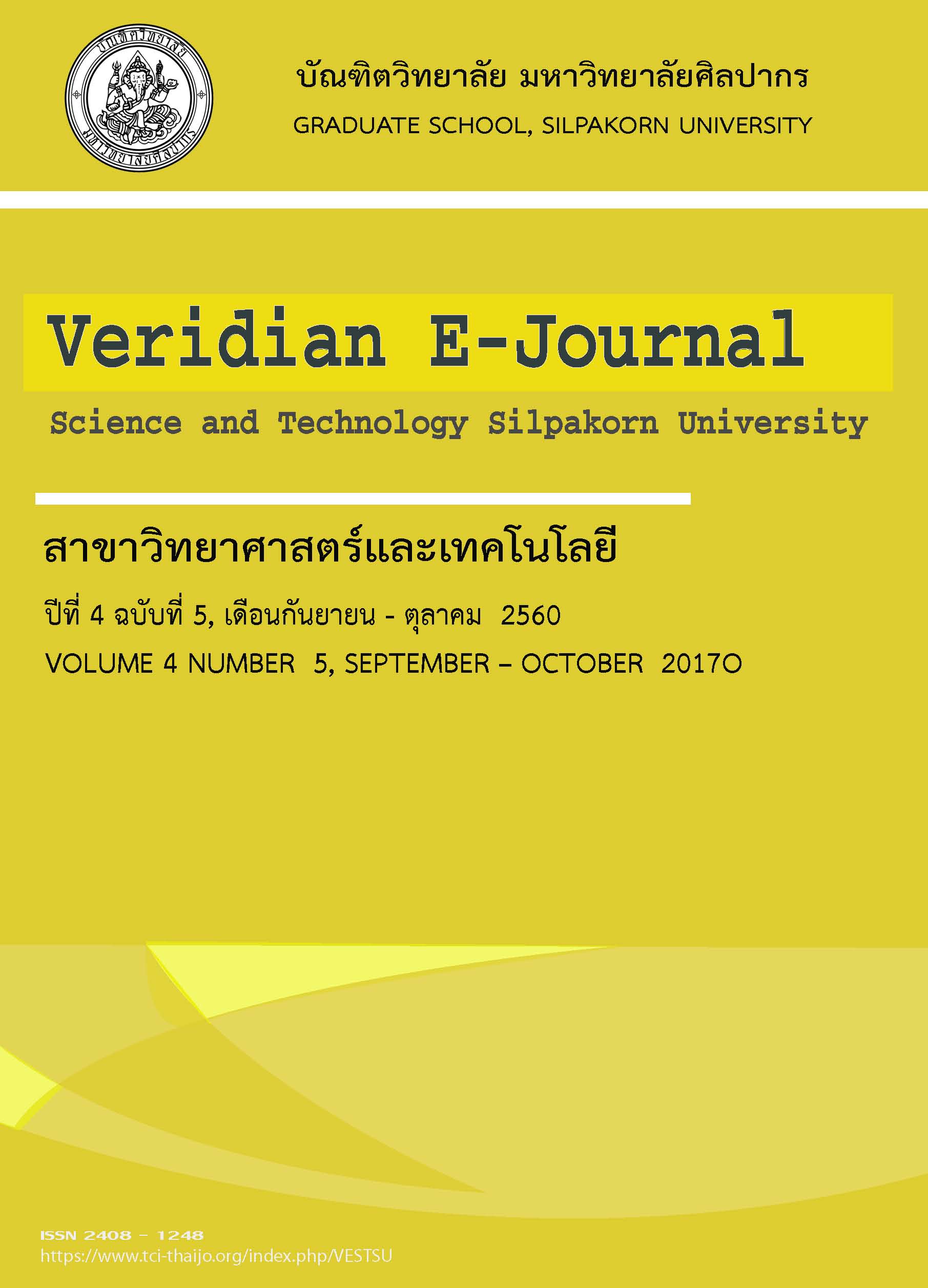วิธีจำแนกกลุ่มการเป็นโรคมะเร็งเต้านมด้วยวิธีการทางสถิติ (Classification Groups For Breast Cancer With Statistical Method)
Main Article Content
Abstract
การวิจัยครั้งนี้เป็นการหาตัวแบบการจำแนกกลุ่มผู้ป่วยที่ได้รับการตรวจจากแพทย์พบว่าผู้ป่วยเป็นโรคมะเร็งเต้านมหรือผู้ป่วยไม่เป็นโรคมะเร็งเต้านม โดยพิจารณาตามลักษณะเซลล์เนื้อร้ายที่เจริญเติบโตผิดปกติของโรคมะเร็งเต้านม ซึ่งมีตัวแปรอิสระ คือ เซลล์เนื้อร้ายที่เจริญเติบโตผิดปกติ ได้แก่ ความหนาของก้อนเนื้อ (Clump Thickness (X1)), ความสม่ำเสมอของขนาดเซลล์ (Uniformity of Cell Size (X2)), ความสม่ำเสมอของรูปร่างเซลล์ (Uniformity of Cell Shape (X3)), การเกาะติดขอบของเซลล์ (Marginal Adhesion (X4)), ขนาดเซลล์เดียว (Single Epithelial Cell Size (X5)), นิวเคลียสไม่ถูกห้อหุ้ม (Bare Nuclei (X6)), โครมาตินเฉพาะ (Bland Chromatin (X7)), นิวคลีโอไลในภาวะปกติ (Normal Nucleoli (X8)), และการขยายตัวของเซลล์ (Mitoses (X9)), ส่วนตัวแปรตามคือผลการตรวจจากแพทย์พบว่าผู้ป่วยเป็นโรคมะเร็งเต้านมหรือผู้ป่วยไม่เป็นโรคมะเร็งเต้านม โดยใช้เทคนิคการวิเคราะห์การถดถอยลอจิสติก (Logistic Regression Analysis) และวิธีการวิเคราะห์การจำแนกกลุ่ม (Discriminant Analysis) จะสรุปได้ว่า ตัวแบบ Logistic Regression มีอำนาจจำแนกได้ถูกต้องร้อยละ 96.90 สูงกว่าวิธี Discriminant Analysis มีอำนาจจำแนกได้ถูกต้องร้อยละ 96.10 ซึ่งตัวแบบ Logistic Regression ใช้ตัวแปรพยากรณ์ 4 ชนิดคือความหนาของก้อนเนื้อ (Clump Thickness (X1)), การเกาะติดขอบของเซลล์ (Marginal Adhesion (X4)), นิวเคลียสไม่ถูกห้อหุ้ม (Bare Nuclei (X6)) และโครมาตินเฉพาะ (Bland Chromatin(X7)) ส่วนตัวแบบ Discriminant Analysis ใช้ตัวแปรพยากรณ์ทั้ง 9 ชนิดในการพยากรณ์จัดกลุ่ม
This research is a classification group, the patient is detected at any breast cancer or non-breast cancer. Assessment of characteristics of abnormal growth of breast cancer cells such as Clump Thickness (X1), Uniformity of Cell Size (X2), Uniformity of Cell Shape (X3), Marginal Adhesion (X4), Single Epithelial Cell Size (X5), Bare Nuclei (X6), Bland Chromatin (X7), Normal Nucleoli (X8), and Mitoses (X9) are independent variables. The dependent variable is the result which is detected at any breast cancer or non-breast cancer by using Logistic Regression Model and Discriminant Model. Conclude that Logistic Regression Model has 96.90% classification higher than Discriminant Model has 96.10% classification. Logistic Regression Model can used predicted variables 4 variables are Clump Thickness (X1), Marginal Adhesion (X4), Bare Nuclei (X6) and Bland Chromatin (X7). The study results reveal that the discriminant analysis can used predicted variables 9 variables for classifying groups of breast cancer and non- breast cancer.

